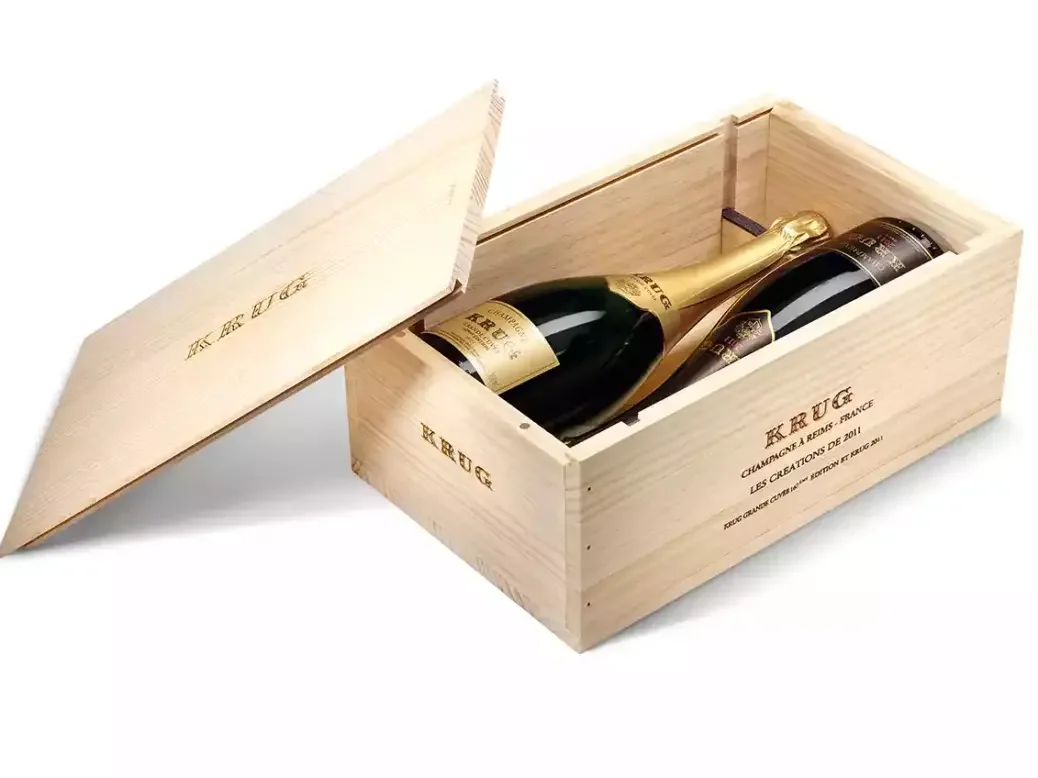
It’s a tribute to Julie Cavil’s winemaking skill that Krug’s latest releases rise above a challenging, unheralded vintage, says Anne Krebiehl MW.
As always, Krug’s chef de cave Julie Cavil is refreshingly honest. She means it when she says that to taste with her the newly released 2011 vintage and the 167th edition of the Grande Cuvée made the same year is “to enter into the intimacy of the tasting committee and to show that these are the two decisions we made.”
Calamity and bravery
Making a Vintage wine in 2011 was a brave decision. Other houses have also done so, but it is generally an unsung vintage, which usually evokes raised eyebrows rather than beatific smiles. It was not a kind year. In Cavil’s own words, it was “a year cut in two, with reversed seasons. Imagine the flowering period, this critical period in the year—everything beforehand was record hot and dry weather, summer during spring,” followed by “fall in summer. We had record rainfall, 70 percent more than usual, and much freshness. So, it is a story of duality.” She continues, “I remember, we were about to pick the grapes, had decided the date, then there were four days of intense heat, then four days of intense rain, and temperatures of below 18°C [64°F]. The rain made the berries swell and diluted the sugar. We had expected that overripeness was going to be the challenge. Because of the heat, the fruit was already cooked—but because of the stop [in ripening] and the dilution, there was no sugar.” You can still hear the anguish in her voice as she recalls these calamities: “This meant that, for the first time ever, we told our pickers to go back home. Even in 2004, the sugar was higher than in 2011. It was the first time we picked Clos d’Ambonnay and the north of the Montagne de Reims before Clos du Mesnil and the Côte des Blancs.” She says that “this is the true story of Krug 2011.” In the end, they even had to chaptalize.
2011 Krug: A year for Pinot Noir
Cavil notes, however, that Pinot Noir managed to protect itself, coming out rather well in the end. “What we observed in these circumstances, and also in the tasting room”—where the Krug tasting committee assesses and scores hundreds of wines blind, so as not to be swayed by any preconceptions about provenance—“was that we had this gourmandise; we had a lot of aromatic expression, like all the fruits were cooked. On the other hand, we had incredible structure, especially in Pinot Noir—elegance and length.”
For each vintage, Cavil says the tasting committee comes up with two attributes that characterize the wine, “so that you know exactly what you are getting.” For 2011, these attributes are “spirited roundness.” I can see what she means: There is far more fruit on the nose than usual, for now dominating the characteristic Krug savoriness. It is clear that 2011 is a triumph of blending over nature—trust Krug to pull this off. What is more, I am sure that this will only get more complex with age. The length promises as much. The power of blending is apparent, too, in the 167th edition of the Grande Cuvée, also created in 2011—a very energetic wine with beautiful depth.
Tasting
The wines have a dosage of between 4 and 5g/l.
2011 Krug
A blend of 46% Pinot Noir, 37% Chardonnay, and 17% Meunier; disgorged after 12 years on lees
There is a touch of apricot on the nose, followed by smokiness, a sense of creamy polenta, and toasted nigella seed. The rounded palate combines the buttery, creamy richness of crumbly shortcrust pastry with the juicy flow of ripe mirabelle, still enfolded in savory smoke, before tapering into freshness. A web of fine astringency—akin to plum-peel and Boskoop-apple tartness—contains this juiciness, makes the mouth water, and underlines the brightness of the wine. For now, fruit holds sway, but a salty undertow is most promising. The flavors echo long. | 95
Krug Grande Cuvée 167ème Edition
Created around the 2011 vintage: 58% 2011, 42% reserve wines; 47% Pinot Noir, 36% Chardonnay, 17% Meunier; 191 different wines from 13 years, going back to 1995
Toasted sesame, grilled rye bread, and salty cracker meet on the nose, aligned to a hint of seashell and lilac, bedded on creaminess. The palate is beautifully fresh, with more of that smoky, reductive toastiness enveloping the wine, while the finest creamy bubbles transport freshness, saltiness, and chalky depth, made all the more nuanced by a superb streak of acidity. A wine of astonishing power, with quite some drive: muscular, sinewy, and so toned. | 95






